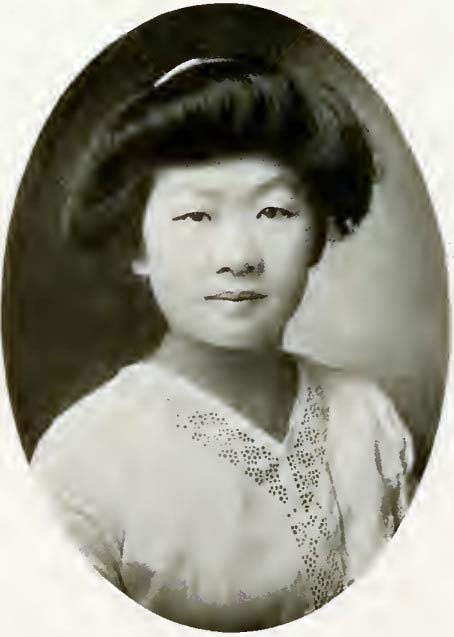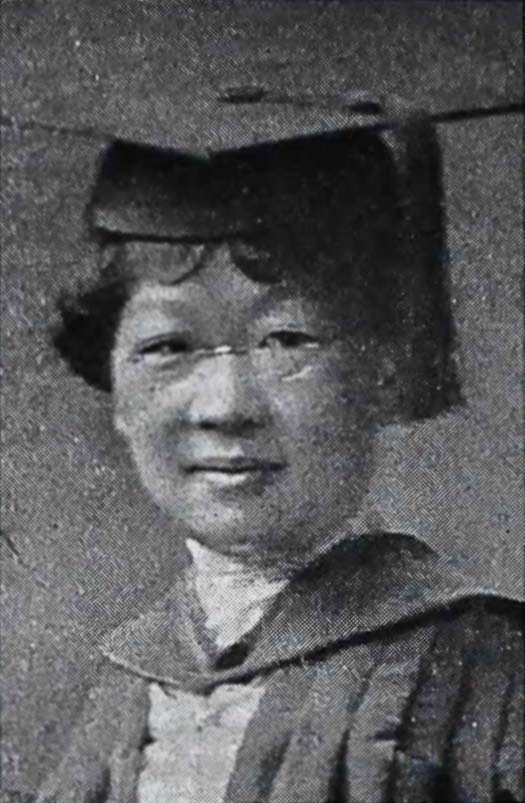Chi Che Wang, PhD, 1894-1979
By Emma Florio, Special Collections Library Assistant
 Chi Che Wang was born on October 3, 1894, in Suzhou, a city on China’s eastern coast. Her father was a government official, and her mother was a social reformer who founded a girls’ school in Suzhou and advocated for the abolition of the practice of foot binding. Wang’s early education came from missionary girls’ schools in Suzhou and Kyoto, Japan. In 1907, at age 13, she came to the United States as one of the first girls sent abroad for education by the Chinese government.¹ She attended Walnut Hill, a women's college preparatory school in Natick, Massachusetts, that acted as a feeder school for Wellesley College, and earned her bachelor's degree from Wellesley in 1914. Image at right: Wang's portrait from the 1914 Wellesley yearbook.
Chi Che Wang was born on October 3, 1894, in Suzhou, a city on China’s eastern coast. Her father was a government official, and her mother was a social reformer who founded a girls’ school in Suzhou and advocated for the abolition of the practice of foot binding. Wang’s early education came from missionary girls’ schools in Suzhou and Kyoto, Japan. In 1907, at age 13, she came to the United States as one of the first girls sent abroad for education by the Chinese government.¹ She attended Walnut Hill, a women's college preparatory school in Natick, Massachusetts, that acted as a feeder school for Wellesley College, and earned her bachelor's degree from Wellesley in 1914. Image at right: Wang's portrait from the 1914 Wellesley yearbook.
After graduating Wang relocated to Chicago and entered the University of Chicago. In 1915, while pursuing her master's degree, she co-founded the Chicago Chinese Women’s Club with Margaret H. D. Lin, the first woman to graduate from University of Illinois’ medical school; the club remained active until the late 1960s.  Wang earned her master's degree in chemistry from the University of Chicago in 1916 and a PhD in chemistry and nutrition in 1918, with a dissertation titled “Chemistry of Chinese Preserved Eggs and Chinese Edible Birds' Nests.” While at the university, Wang worked as an assistant, and later instructor, in food chemistry and is thus considered the first Chinese woman to be on the faculty of an American university. She completed a postdoctoral appointment at Johns Hopkins University before returning to Chicago to lead the department of blood chemistry at the Morris Memorial Institute for Medical Research at Michael Reese Hospital from 1920 to 1930. In 1928 she participated in the Woman’s World’s Fair in Chicago, giving clinical laboratory demonstrations as part of the exhibits intended to demonstrate the progress of women in the 20th century. Image at left: Wang's portrait, as a member of the medical staff, from the Michael Reese Hospital School of Nursing 1925 yearbook.
Wang earned her master's degree in chemistry from the University of Chicago in 1916 and a PhD in chemistry and nutrition in 1918, with a dissertation titled “Chemistry of Chinese Preserved Eggs and Chinese Edible Birds' Nests.” While at the university, Wang worked as an assistant, and later instructor, in food chemistry and is thus considered the first Chinese woman to be on the faculty of an American university. She completed a postdoctoral appointment at Johns Hopkins University before returning to Chicago to lead the department of blood chemistry at the Morris Memorial Institute for Medical Research at Michael Reese Hospital from 1920 to 1930. In 1928 she participated in the Woman’s World’s Fair in Chicago, giving clinical laboratory demonstrations as part of the exhibits intended to demonstrate the progress of women in the 20th century. Image at left: Wang's portrait, as a member of the medical staff, from the Michael Reese Hospital School of Nursing 1925 yearbook.
Wang subsequently held many different positions related to chemistry, food, and nutrition throughout her career. In the 1930s she conducted research into metabolism at the University of Cincinnati’s Children’s Hospital. In 1940 she once again returned to Chicago and worked as a research chemist at the Northwestern Yeast Company while also teaching a government-sponsored course in food analysis at the Illinois Institute of Technology. From 1943 to 1946 she worked at Northwestern University Medical School as Assistant Professor in the Physiology Department, where she specialized in the study of nephrosis in children. It was during this time that Wang also applied to become a United States citizen; she was naturalized in May 1947. After a stint at the Mayo Clinic, she returned to Chicago and became an Associate Professor of both Biochemistry and Experimental Medicine at NUMS as well as a researcher in the metabolic lab at the Hines Veterans Administration Hospital.
In 1954 Wang moved to Kansas and spent the rest of her career at the VA hospital in Topeka, where she worked as a biochemist in charge of research and clinical chemistry. She retired in 1961 and died in Topeka in 1979. Decades after her death, in recognition of her connection to Chicago, a park in the Lakeview neighborhood was named in her honor, near the site of Children’s Memorial Hospital where she had conducted research while working at Northwestern University Medical School.
Endnotes
1. Tsao, F. Y., “A Brief History of Chinese Women-Students in America,” The Chinese Students’ Monthly, vol. 6, no. 7 (May 1911).
Selected References
Massee, Kate. “Women in War Work.” Chicago Daily Tribune, March 31, 1943.
Ogilvie, Marilyn, and Joy Harvey. The Biographical Dictionary of Women in Science. New York: Routledge, 2014.
Wellesley College. “Chinese Alumnae Corner: Chi Che Wang.”
Updated: July 3, 2024